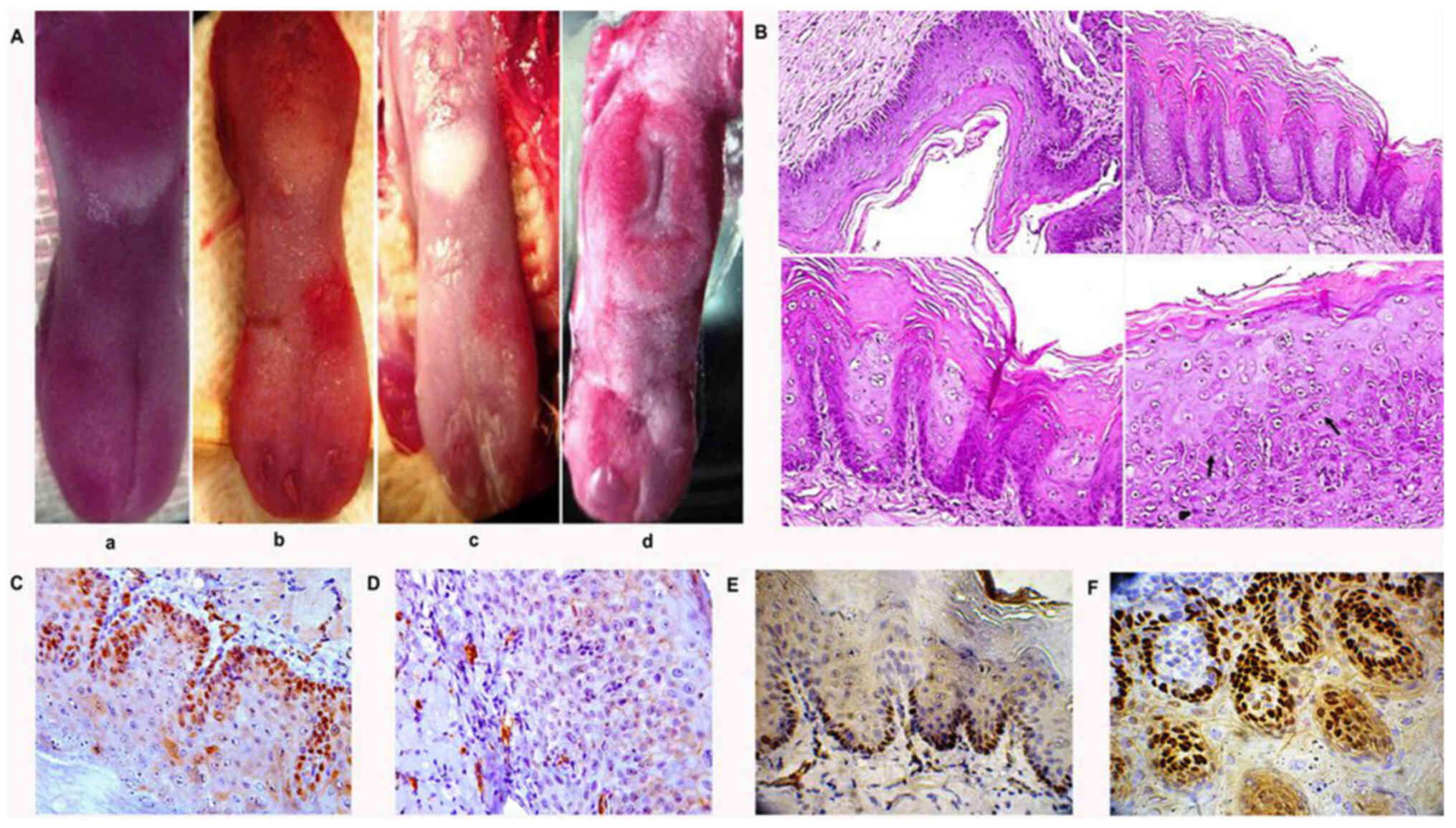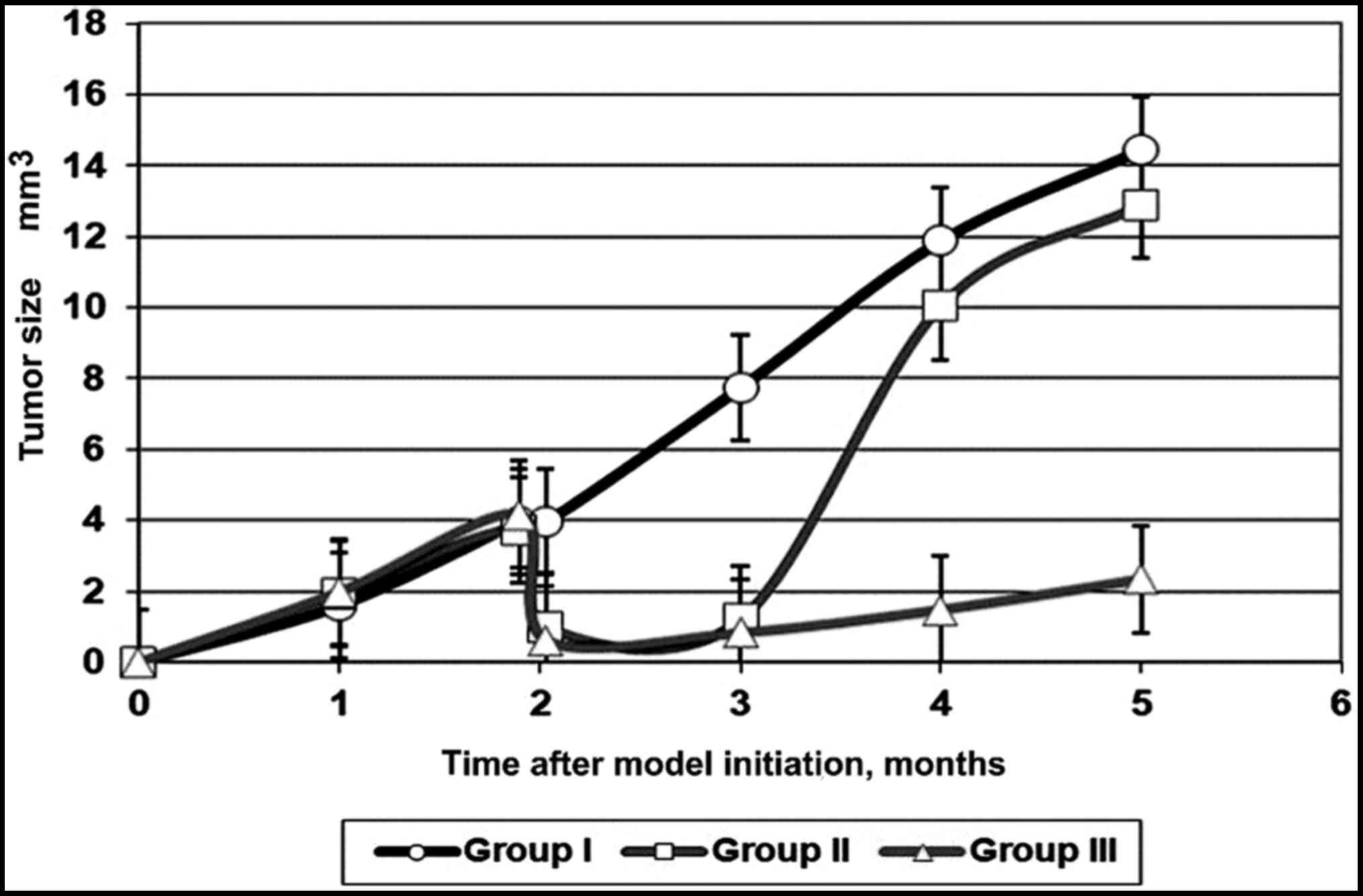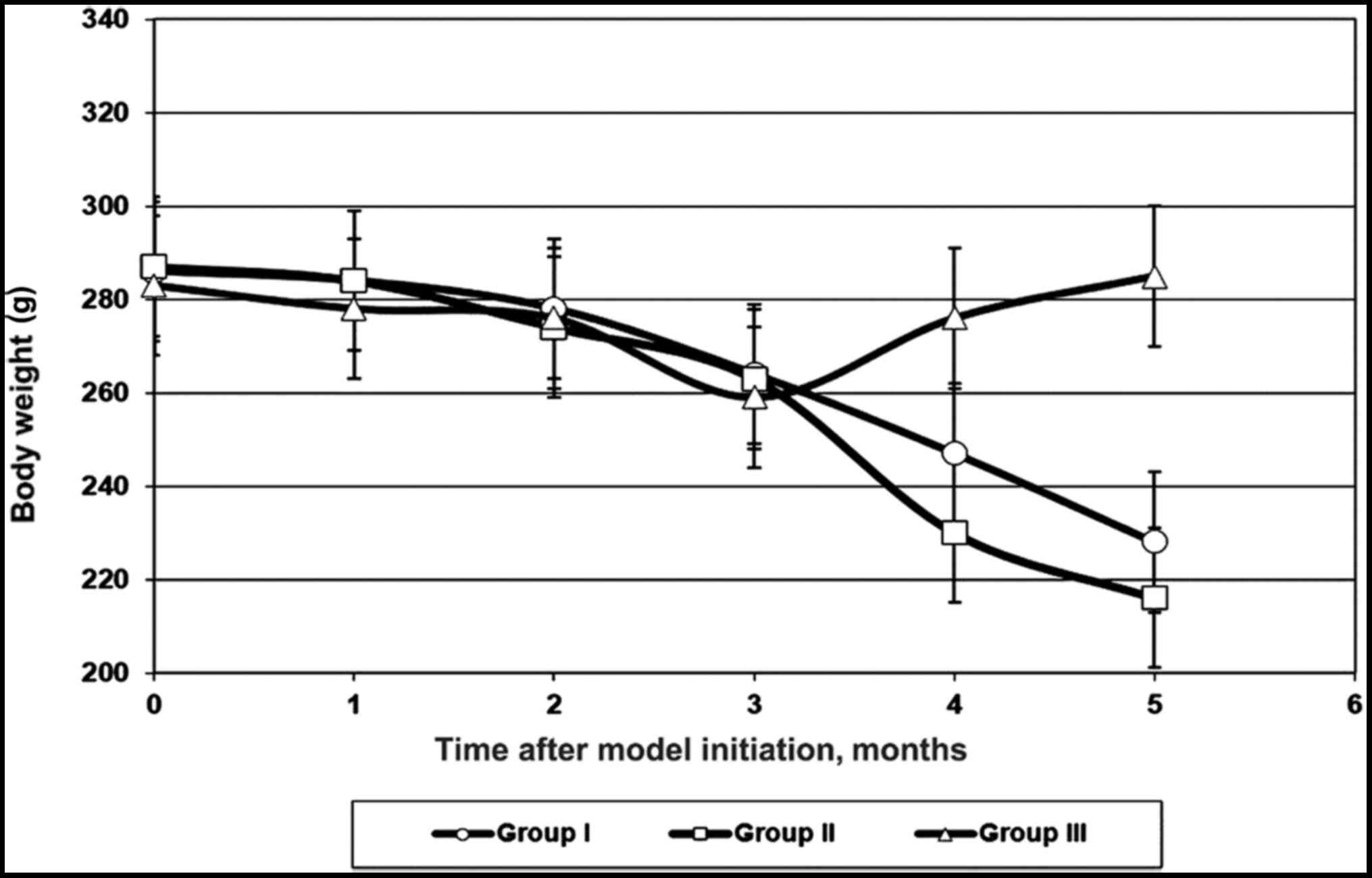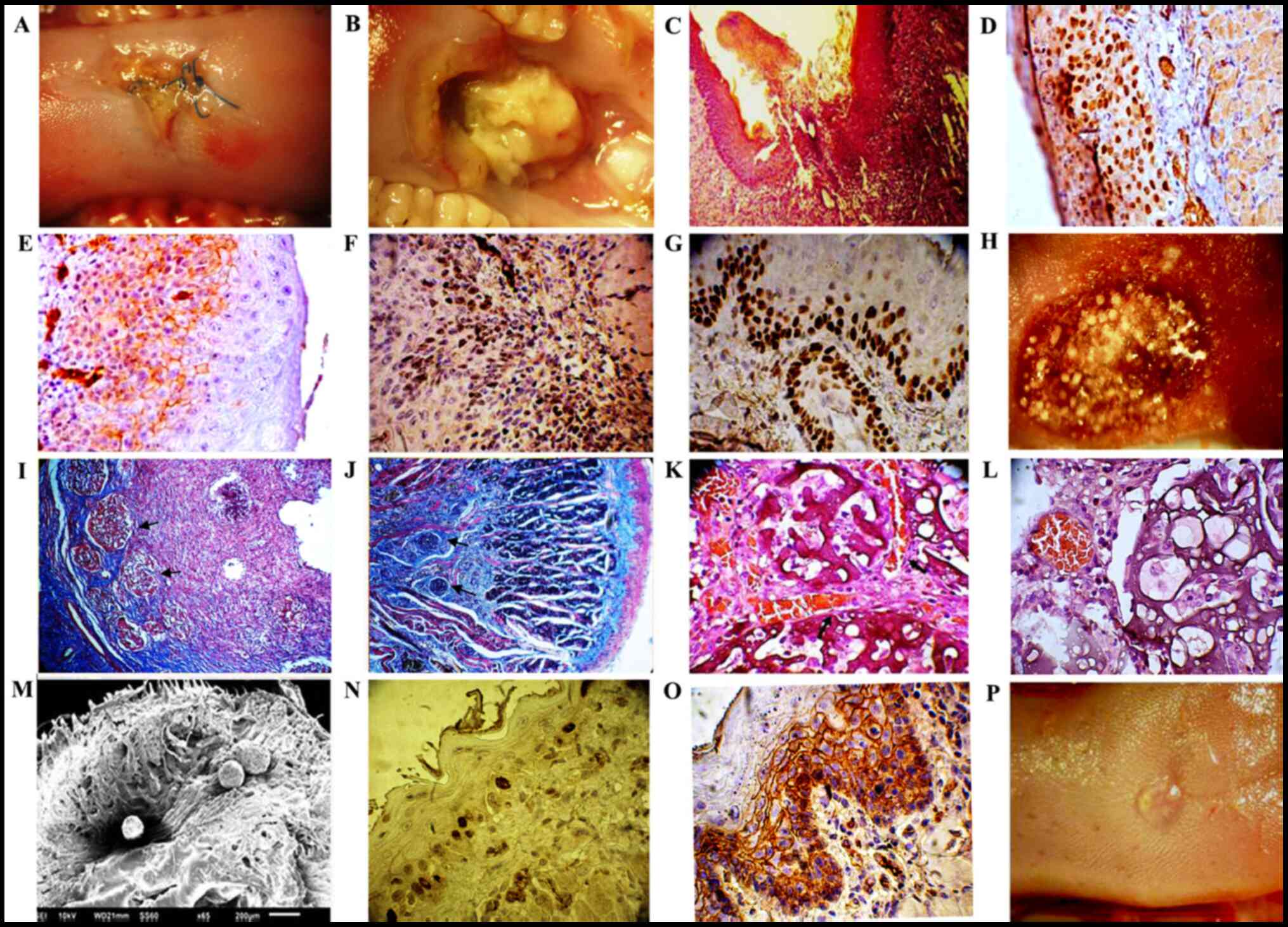|
1
|
Torre LA, Bray F, Siegel RL, Ferlay J,
Lortet-Tieulent J and Jemal A: Global cancer statistics, 2012. CA
Cancer J Clin. 65:87–108. 2015. View Article : Google Scholar : PubMed/NCBI
|
|
2
|
Johnson NW, Jayasekara P and Amarasinghe
AA: Squamous cell carcinoma and precursor lesions of the oral
cavity: Epidemiology and aetiology. Periodontol 2000. 57:19–37.
2011. View Article : Google Scholar : PubMed/NCBI
|
|
3
|
Mahvi DA, Liu R, Grinstaff MW, Colson YL
and Raut CP: Local Cancer Recurrence: The Realities, Challenges,
and Opportunities for New Therapies. CA Cancer J Clin. 68:488–505.
2018. View Article : Google Scholar : PubMed/NCBI
|
|
4
|
Oliver RJ, Clarkson JE, Conway DI, Glenny
A, Macluskey M, Pavitt S, Sloan P and Worthington HV; CSROC Expert
Panel, : Interventions for the treatment of oral and oropharyngeal
cancers: Surgical treatment. Cochrane Database Syst Rev.
4:CD0062052007.PubMed/NCBI
|
|
5
|
Bulsara VM, Worthington HV, Glenny AM,
Clarkson JE, Conway DI and Macluskey M: Interventions for the
treatment of oral and oropharyngeal cancers: Surgical treatment.
Cochrane Database Syst Rev. 12:CD0062052018.PubMed/NCBI
|
|
6
|
Sun LM, Leung SW, Su CY and Wang CJ: The
relapse patterns and outcome of postoperative recurrent tongue
cancer. J Oral Maxillofac Surg. 55:827–831. 1997. View Article : Google Scholar : PubMed/NCBI
|
|
7
|
Kishi N, Imai Y, Kanayama N, Hirata T,
Kawaguchi Y, Konishi K, Nishiyama K and Teshima T: Recurrence
Patterns of Postoperative Radiation Therapy for Patients with Head
and Neck Squamous Cell Carcinoma. Int J Radiat Oncol Biol Phys.
96:E389–E390. 2016. View Article : Google Scholar
|
|
8
|
Liao CT, Chang JT, Wang HM, Ng SH, Hsueh
C, Lee LY, Lin CH, Chen IH, Huang SF, Cheng AJ, et al: Salvage
therapy in relapsed squamous cell carcinoma of the oral cavity: How
and when? Cancer. 112:94–103. 2008. View Article : Google Scholar : PubMed/NCBI
|
|
9
|
Rowe DE, Carroll RJ and Day CL Jr:
Prognostic factors for local recurrence, metastasis, and survival
rates in squamous cell carcinoma of the skin, ear, and lip.
Implications for treatment modality selection. J Am Acad Dermatol.
26:976–990. 1992. View Article : Google Scholar : PubMed/NCBI
|
|
10
|
Larsen SR, Johansen J, Sørensen JA and
Krogdahl A: The prognostic significance of histological features in
oral squamous cell carcinoma. J Oral Pathol Med. 38:657–662. 2009.
View Article : Google Scholar : PubMed/NCBI
|
|
11
|
Woolgar JA and Triantafyllou A: A
histopathological appraisal of surgical margins in oral and
oropharyngeal cancer resection specimens. Oral Oncol. 41:1034–1043.
2005. View Article : Google Scholar : PubMed/NCBI
|
|
12
|
Zhang G, Wang X, Wang Z, Zhang J and Suggs
L: A PEGylated fibrin patch for mesenchymal stem cell delivery.
Tissue Eng. 12:9–19. 2006. View Article : Google Scholar : PubMed/NCBI
|
|
13
|
Kakabadze Z, Kipshidze N, Mardaleishvili
K, Chutkerashvili G, Chelishvili I, Harders A, Loladze G,
Shatirishvili G, Kipshidze N, Chakhunashvili D, et al: Phase 1
Trial of Autologous Bone Marrow Stem Cell Transplantation in
Patients with Spinal Cord Injury. Stem Cells Int. 2016:67682742016.
View Article : Google Scholar : PubMed/NCBI
|
|
14
|
Sagheer SH, Whitaker-Menezes D, Han JYS,
Curry JM, Martinez-Outschoorn U and Philp NJ: 4NQO induced
carcinogenesis: A mouse model for oral squamous cell carcinoma.
Methods Cell Biol. 163:93–111. 2021. View Article : Google Scholar : PubMed/NCBI
|
|
15
|
Hawkins BL, Heniford BW, Ackermann DM,
Leonberger M, Martinez SA and Hendler FJ: 4NQO carcinogenesis: A
mouse model of oral cavity squamous cell carcinoma. Head Neck.
16:424–432. 1994. View Article : Google Scholar : PubMed/NCBI
|
|
16
|
El-Rouby DH: Histological and
immunohistochemical evaluation of the chemopreventive role of
lycopene in tongue carcinogenesis induced by
4-nitroquinoline-1-oxide. Arch Oral Biol. 56:664–671. 2011.
View Article : Google Scholar : PubMed/NCBI
|
|
17
|
Kakabadze Z, Kakabadze A, Chakhunashvili
D, Karalashvili L, Berishvili E, Sharma Y and Gupta S:
Decellularized human placenta supports hepatic tissue and allows
rescue in acute liver failure. Hepatology. 67:1956–1969. 2018.
View Article : Google Scholar : PubMed/NCBI
|
|
18
|
Rothwell SW, Sawyer E, Dorsey J, Flournoy
WS, Settle T, Simpson D, Cadd G, Janmey P, White C and Szabo KA:
Wound healing and the immune response in swine treated with a
hemostatic bandage composed of salmon thrombin and fibrinogen. J
Mater Sci Mater Med. 20:2155–2166. 2009. View Article : Google Scholar : PubMed/NCBI
|
|
19
|
Ahmed TA, Dare EV and Hincke M: Fibrin: A
versatile scaffold for tissue engineering applications. Tissue Eng
Part B Rev. 14:199–215. 2008. View Article : Google Scholar : PubMed/NCBI
|
|
20
|
Costantini V and Zacharski LR: The role of
fibrin in tumor metastasis. Cancer Metastasis Rev. 11:283–290.
1992. View Article : Google Scholar : PubMed/NCBI
|
|
21
|
Staton CA, Brown NJ and Lewis CE: The role
of fibrinogen and related fragments in tumour angiogenesis and
metastasis. Expert Opin Biol Ther. 3:1105–1120. 2003. View Article : Google Scholar : PubMed/NCBI
|
|
22
|
Liu J, Tan Y, Zhang H, Zhang Y, Xu P, Chen
J, Poh YC, Tang K, Wang N and Huang B: Soft fibrin gels promote
selection and growth of tumorigenic cells. Nat Mater. 11:734–741.
2012. View
Article : Google Scholar : PubMed/NCBI
|
|
23
|
Kuwahara M, Fujita H, Kataoka Y, Nakajima
Y, Yamada M and Sugimoto N: In situ condensation of an anti-cancer
drug into fibrin gel enabling effective inhibition of tumor cell
growth. Chem Commun (Camb). 55:11679–11682. 2019. View Article : Google Scholar : PubMed/NCBI
|
|
24
|
Marano L and Di Martino N: Efficacy of
Human Fibrinogen-Thrombin Patch (TachoSil) Clinical Application in
Upper Gastrointestinal Cancer Surgery. J Invest Surg. 29:352–358.
2016. View Article : Google Scholar : PubMed/NCBI
|
|
25
|
Rejinold NS, Muthunarayanan M, Chennazhi
KP, Nair SV and Jayakumar R: 5-fluorouracil loaded fibrinogen
nanoparticles for cancer drug delivery applications. Int J Biol
Macromol. 48:98–105. 2011. View Article : Google Scholar : PubMed/NCBI
|
|
26
|
Hu Y, Yu T, Liu X, He Y, Deng L, Guo J,
Hua Y, Luo T and Gao X: Improved anti-tumor efficacy via
combination of oxaliplatin and fibrin glue in colorectal cancer.
Oncotarget. 9:2515–2526. 2017. View Article : Google Scholar : PubMed/NCBI
|
|
27
|
Lönnqvist S, Rakar J, Briheim K and Kratz
G: Biodegradable Gelatin Microcarriers Facilitate
Re-Epithelialization of Human Cutaneous Wounds - An In Vitro Study
in Human Skin. PLoS One. 10:e01280932015. View Article : Google Scholar : PubMed/NCBI
|
|
28
|
Kakabadze Z, Chakhunashvili D,
Gogilashvili K, Ediberidze K, Chakhunashvili K, Kalandarishvili K
and Karalashvili L: Bone Marrow Stem Cell and Decellularized Human
Amniotic Membrane for the Treatment of Nonhealing Wound After
Radiation Therapy. Exp Clin Transplant. 17 (Suppl 1):92–98. 2019.
View Article : Google Scholar : PubMed/NCBI
|
|
29
|
Marfia G, Navone SE, Di Vito C, Ughi N,
Tabano S, Miozzo M, Tremolada C, Bolla G, Crotti C, Ingegnoli F, et
al: Mesenchymal stem cells: Potential for therapy and treatment of
chronic non-healing skin wounds. Organogenesis. 11:183–206. 2015.
View Article : Google Scholar : PubMed/NCBI
|
|
30
|
Asanuma H, Meldrum DR and Meldrum KK:
Therapeutic applications of mesenchymal stem cells to repair kidney
injury. J Urol. 184:26–33. 2010. View Article : Google Scholar : PubMed/NCBI
|
|
31
|
Burdon TJ, Paul A, Noiseux N, Prakash S
and Shum-Tim D: Bone marrow stem cell derived paracrine factors for
regenerative medicine: Current perspectives and therapeutic
potential. Bone Marrow Res. 2011:2073262011. View Article : Google Scholar : PubMed/NCBI
|
|
32
|
Chen L, Tredget EE, Wu PY and Wu Y:
Paracrine factors of mesenchymal stem cells recruit macrophages and
endothelial lineage cells and enhance wound healing. PLoS One.
3:e18862008. View Article : Google Scholar : PubMed/NCBI
|
|
33
|
Walter MN, Wright KT, Fuller HR, MacNeil S
and Johnson WE: Mesenchymal stem cell-conditioned medium
accelerates skin wound healing: An in vitro study of fibroblast and
keratinocyte scratch assays. Exp Cell Res. 316:1271–1281. 2010.
View Article : Google Scholar : PubMed/NCBI
|
|
34
|
Kwon HM, Hur SM, Park KY, Kim CK, Kim YM,
Kim HS, Shin HC, Won MH, Ha KS, Kwon YG, et al: Multiple paracrine
factors secreted by mesenchymal stem cells contribute to
angiogenesis. Vascul Pharmacol. 63:19–28. 2014. View Article : Google Scholar : PubMed/NCBI
|
|
35
|
Baraniak PR and McDevitt TC: Stem cell
paracrine actions and tissue regeneration. Regen Med. 5:121–143.
2010. View Article : Google Scholar : PubMed/NCBI
|
|
36
|
Kakabadze A, Mardaleishvili K, Loladze G,
Karalashvili L, Chutkerashvili G, Chakhunashvili D and Kakabadze Z:
Reconstruction of mandibular defects with autogenous bone and
decellularized bovine bone grafts with freeze-dried bone marrow
stem cell paracrine factors. Oncol Lett. 13:1811–1818. 2017.
View Article : Google Scholar : PubMed/NCBI
|
|
37
|
Chan JK and Lam PY: Human mesenchymal stem
cells and their paracrine factors for the treatment of brain
tumors. Cancer Gene Ther. 20:539–543. 2013. View Article : Google Scholar : PubMed/NCBI
|
|
38
|
Sasportas LS, Kasmieh R, Wakimoto H,
Hingtgen S, van de Water JA, Mohapatra G, Figueiredo JL, Martuza
RL, Weissleder R and Shah K: Assessment of therapeutic efficacy and
fate of engineered human mesenchymal stem cells for cancer therapy.
Proc Natl Acad Sci USA. 106:4822–4827. 2009. View Article : Google Scholar : PubMed/NCBI
|
|
39
|
Dwyer RM, Ryan J, Havelin RJ, Morris JC,
Miller BW, Liu Z, Flavin R, O'Flatharta C, Foley MJ, Barrett HH, et
al: Mesenchymal Stem Cell-mediated delivery of the sodium iodide
symporter supports radionuclide imaging and treatment of breast
cancer. Stem Cells. 29:1149–1157. 2011. View Article : Google Scholar : PubMed/NCBI
|
|
40
|
Li GC, Ye QH, Xue YH, Sun HJ, Zhou HJ, Ren
N, Jia HL, Shi J, Wu JC, Dai C, et al: Human mesenchymal stem cells
inhibit metastasis of a hepatocellular carcinoma model using the
MHCC97-H cell line. Cancer Sci. 101:2546–2553. 2010. View Article : Google Scholar : PubMed/NCBI
|
|
41
|
Zischek C, Niess H, Ischenko I, Conrad C,
Huss R, Jauch KW, Nelson PJ and Bruns C: Targeting tumor stroma
using engineered mesenchymal stem cells reduces the growth of
pancreatic carcinoma. Ann Surg. 250:747–753. 2009. View Article : Google Scholar : PubMed/NCBI
|
|
42
|
Khakoo AY, Pati S, Anderson SA, Reid W,
Elshal MF, Rovira II, Nguyen AT, Malide D, Combs CA, Hall G, et al:
Human mesenchymal stem cells exert potent antitumorigenic effects
in a model of Kaposi's sarcoma. J Exp Med. 203:1235–1247. 2006.
View Article : Google Scholar : PubMed/NCBI
|


















